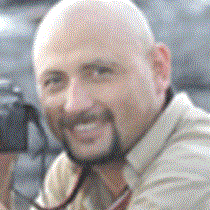Isabela & Fernandina Island
This time the National Geographic Islander took us to the western part of the archipelago, which is the youngest geological formation in Galápagos. Being the newest islands, most of their landscape is black, with a few endemic plants that contrast their dramatic formation. Due to its location the cold upwelling Cromwell current, which is rich in nutrients, is the main reason why the marine life is so diverse in this part of the archipelago. Probably this is the main reason why the majority of penguins, cormorants and the pacific green sea turtles are found here.
After our equatorial line celebration we arrived to a point known as Punta Vicente Roca to take our Zodiacs for a ride along the coast. As soon as we started our adventure we spotted a pacific ocean sun fish which possesses many records of its own; first, it is the largest bony fish; second, it is the fastest growing fish since they start their life as part of the plankton; ultimately a single female may lay a few hundred thousand larvae.
As we continued exploring, piles of marine iguanas were sun bathing for digesting their food. Blue footed and Nazca boobies in big numbers were seen as well. Finally, the two species of flightless marine birds were in the area too. The flightless cormorants represent, for Galápagos the best example of biological evolution, having lost most of the ferula (wish) bone which holds the wing muscles. They are not able to fly any more, and the main reason is the lack of natural predators and the abundance of food.
As we continued navigation to our next destination on Fernandina Island an impressive view of the five main shield volcanoes of Isabela Island was there for our guest‘s delight from our outside decks. Early in the afternoon we disembarked at Fernandina Island to walk over ropy (pahoehoe) and sharper (aa) lava. The first one is very easy to walk on; meanwhile the second one is almost impossible to explore. These two names were given by the native people from Hawaii.
Once on the island we had the impression of being the first ones to set foot on the island. We learned how pioneer plants are colonizing and creating new conditions for species to come. This, by the way, is one of the largest pristine islands on our planet. And that is our challenge… to restore the whole archipelago for generations to come.




